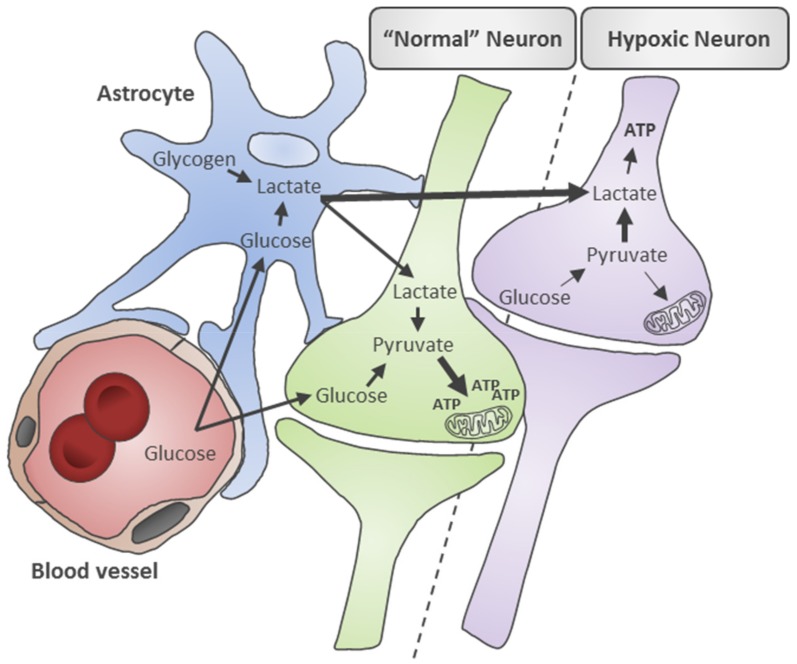Figure 1.
Schematic of lactate and pyruvate metabolism in neurons and astrocytes under normal and hypoxic conditions. Under physiologically normal conditions, glucose is transported from blood vessels across the blood-brain barrier to neurons and astrocytes. In neurons (green cell), glucose is converted into pyruvate by aerobic glycolysis which ultimately generates adenosine triphosphate (ATP) in mitochondrial. In astrocytes (blue cell), glucose and stored glycogen make lactate which is then shuttled to neurons via the astrocyte-neuron lactate shuttle where it is used as fuel to make ATP. Under hypoxic conditions, glucose supply to neurons (purple cell) is decreased and the absence of oxygen causes pyruvate metabolism to shift towards lactate production and less efficient ATP production to meet cellular energy demands. Lactate production and supply by astrocytes is also increased.

